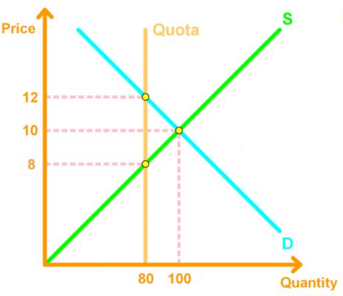Submitted by Ryan Crane
On the occasion of the Housing Element update for the City of Coronado, I thought I might share my observations on the Coronado housing market with those readers that might be interested. The main goal of this letter is to argue that the apparently widely held belief that Coronado is “built out” is a myth. This can be demonstrated using concepts from Economics 101, and the argument will suggest a way in which current Coronado homeowners benefit significantly from the City’s current zoning regime.
Anyone unlucky enough to have taken Introduction to Economics will understand a couple of facts about markets. First, the supply curve for housing will slope up, which means that in the absence of intervention, the quantity supplied of a good, in this case housing, will be higher when prices are high. Conversely, the demand curve slopes down, which means that the quantity demanded will be lower at high prices and higher at low prices. The price at equilibrium reflects the point at which quantity supplied is equal to quantity demanded.
Let’s now assume that in the market for housing, the entire demand curve will move to the right due to population growth. This means that quantity demanded will increase at all price points over time, all else being equal. Therefore, the price of housing in desirable areas like Coronado will increase purely as a function of time, unless a compensatory increase in production occurs. With housing prices so high in Coronado, why is there not a corresponding housing boom?
The critical concept for Coronado homeowners to understand is that zoning represents a production quota for housing. What does that mean? It means, quite simply, that the City caps the number of dwelling units that can be produced per unit of land, usually in the form of limiting the “dwelling units per square foot (or per acre)” for each particular zone.
What is the effect of a production quota on the market for housing? A production quota will result in a production shortfall (i.e. “housing crisis”) if the equilibrium quantity demanded is above the level of the quota. One need not know much about real estate economics to understand that the equilibrium for housing in California is far above the current production level.

We might now observe that the production quota, or zoning, is defined in terms of the efficiency of land use. For example, this means that in the R3 zone, one unit can be built per 1,556 square feet of lot area, even if the housing market at equilibrium would support two units at 778 square feet each. The result is that dwelling units will generally tend to be larger, and there will be fewer of them, than there would be in the absence of the zoning regulation. The production quota therefore represents a significant government intervention in the housing market that drives up prices by restricting supply.
This wasteful use of land, which is mandated by city law, has led to the so-called “built out” state. Put simply, not enough dwelling units are being built per unit of land, and the production quota (zoning) drives this phenomenon, to say nothing of set-back requirements, height restrictions, or parking minimums. This waste of land redounds to the benefit of existing property owners by creating an artificial scarcity of housing. Stated more clearly, current homeowners benefit financially from the current zoning regime because it inflates prices. Increasing prices will also benefit an industry whose revenue depends on capturing a percentage of the sales price of real estate. Furthermore, as the inflated housing prices become more out of reach for the average Californian, this process will drive the AirBnB-mediated commercialization and the “second home-ization” of Coronado’s housing stock, because the composition of the consumer population in the Coronado housing market will change. It therefore becomes unsurprising to observe that Coronado’s main industries appear to be tourism, tourism-dependent businesses, and real estate speculation.
Why, then, is it a myth to say that Coronado is “built out?” The “built out” argument rests on the assumption that land use efficiency cannot be increased. Unfortunately, this is wrong on the facts, because the City can change its zoning laws and the accompanying land use regulations, which will thereby increase the number of dwelling units produced per unit of land. It is not SANDAG’s fault that Coronado has used its land poorly. Those unfortunate enough to have an introductory understanding of urban planning or economics will realize this, and SANDAG presumably employs at least one highly qualified urban planner. The preceding economic argument certainly supports SANDAG’s deaf ear to the protestations of Coronado homeowners and their elected representatives, regardless of the merits of ongoing litigation.
Those who oppose reasonable efforts to increase density through improvement in land use efficiency should acknowledge the negative effect this position has on housing affordability. It may also be worthwhile to examine whether you benefit financially from the ongoing restriction of housing supply, and if so, whether this bothers you. To use more economics jargon, we should question whether Coronado’s zoning regime represents the regulatory capture of the City government by an informal homeowners’ lobby. The unfortunate fact is that there are far more people who would like to live in Coronado than can afford to do so, and these absent voices will never be represented in the City government. Hopefully the Mayor, the City Council and city staff will take this fact into account when working on the Housing Element update. The public interest is not necessarily served by listening solely to the voices of Coronado homeowners, especially when they are the group of people who benefit most from the current regulatory environment, whether they intend to or not.
Ryan Crane
Cui Bono? is a Latin phrase that translates to “To whom is it a benefit?”




